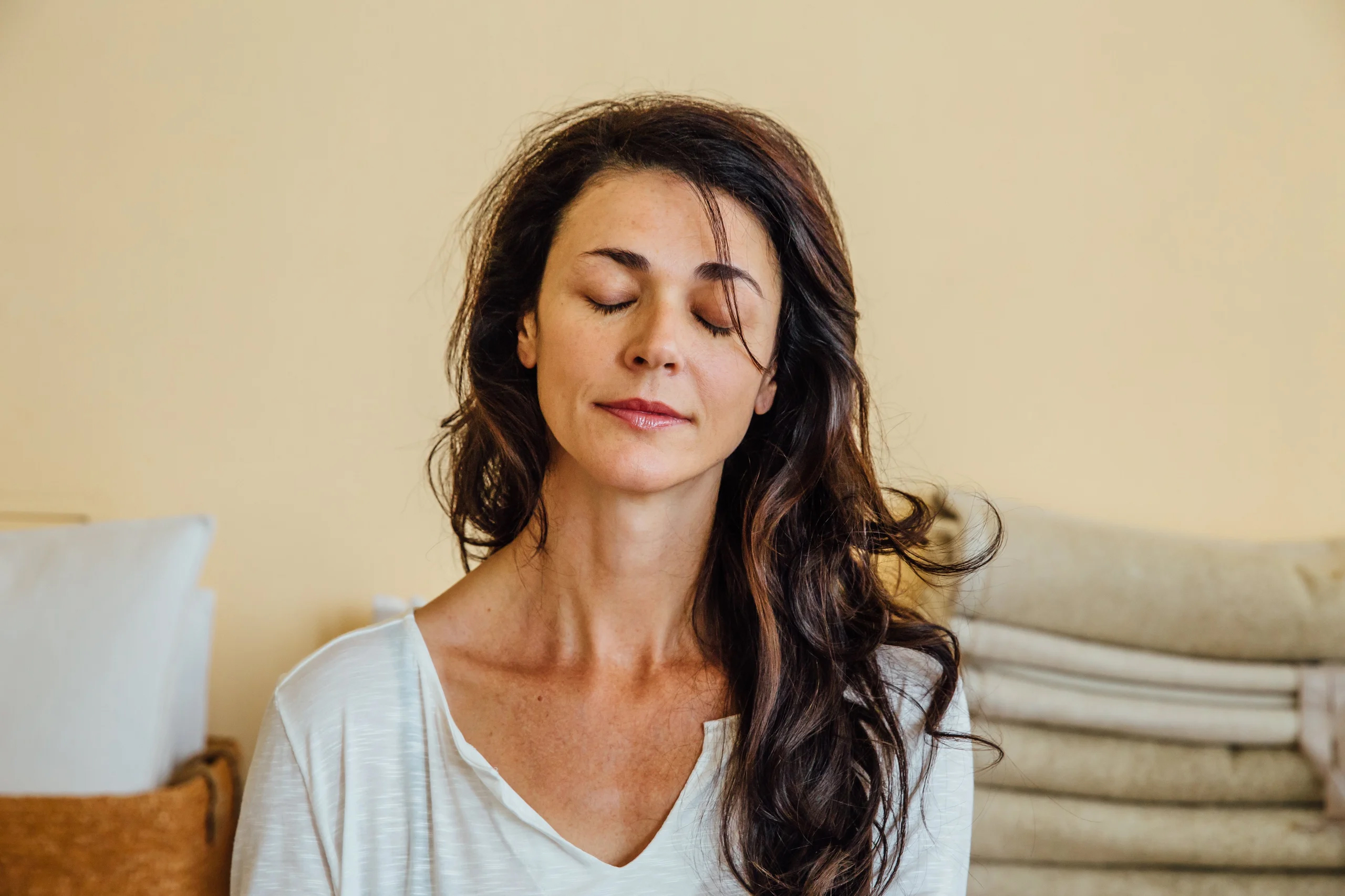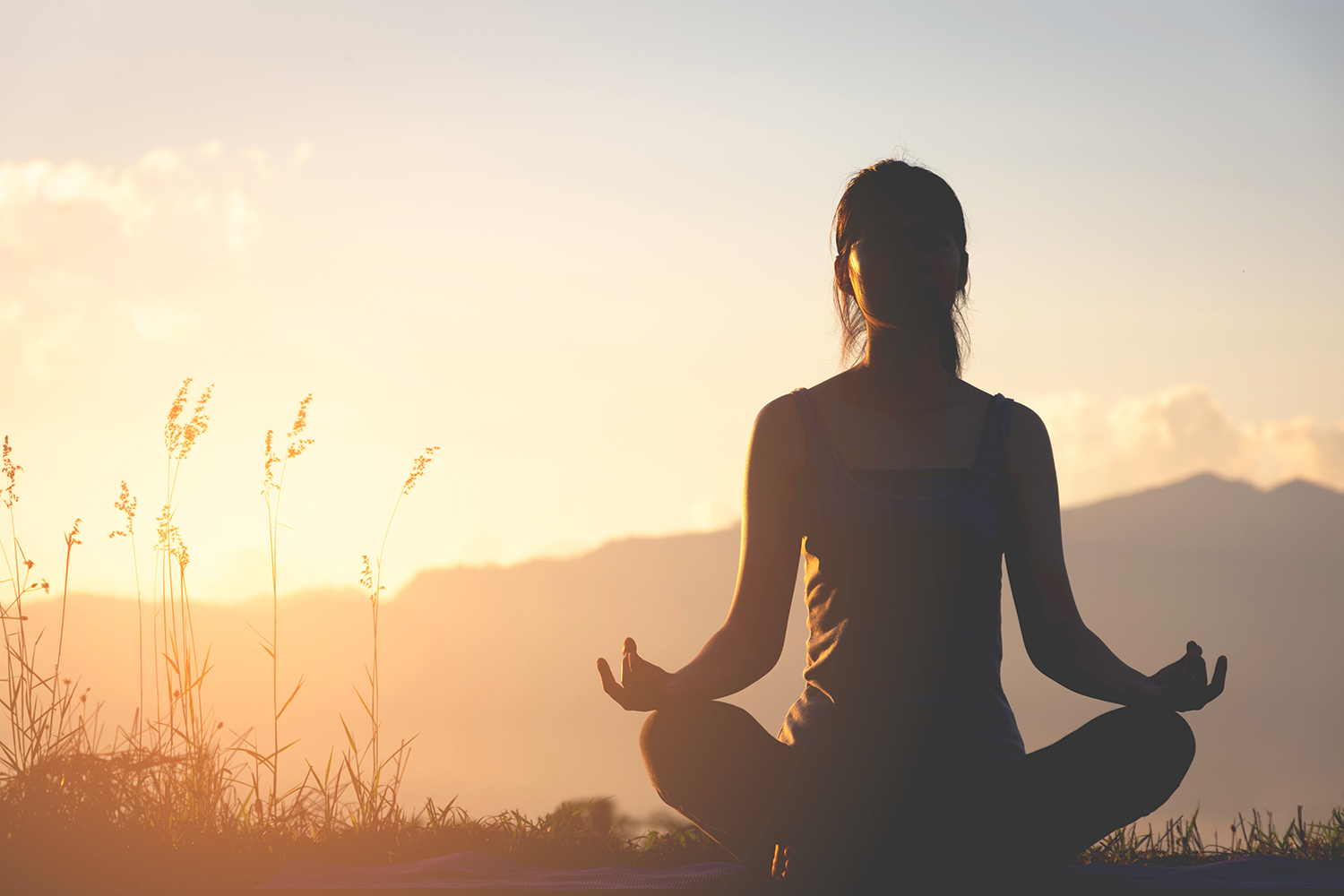You don’t need to sit cross legged for hours to reap the benefits.
If you’ve ever felt like you’ve failed at meditation, you’re not alone.
Confession: Whenever I find myself sitting in a meditation circle I feel like a bit of an imposter, though in recent times I’ve been able to shake the notion that to successfully enjoy the benefits of meditation you need to sit straight-backed in a lotus position for 20 minutes twice daily while banishing all thoughts.
Aside from being uncomfortable sitting cross-legged on a cushion for extended periods of time, I admit to feeling like I’d failed for allowing thoughts to enter my head despite dutifully repeating a mantra.
When others share afterwards how they floated off into a bliss-like state, you can feel a bit meh for not achieving transcendental consciousness – aka frustrated and a little despairing.
Of course, there’s truth in the clichéd phrases that ‘good things take time’, ‘practice makes perfect’, and ‘it works if you stick at it’.
And while I’ve personally struggled to find the time to bookend my day with meditation, I do know of others who swear by it.
Research shows incorporating meditation into your daily routine can improve your overall wellbeing and a greater sense of calm, focus, and self-awareness.
I still remember my mantra when I learned Transcendental Meditation as a young adult. In my 30s I was introduced to the Ishayas’ Ascension Technique, which really resonated, and while I don’t practice it daily, I do still use it when I need to find calm – usually when I’m on a plane!
The good news is you don’t have to meditate for hours at a time to gain some benefits.
It’s also about the small wins and building moments of mindfulness throughout your day and busy schedule, even if that is a one-minute breathwork exercise in a parked car, or a five-minute guided meditation. Think of a pond and the ripple effect!
Walking meditation techniques can also help you to feel more grounded and are easy to do if you’re time poor or can’t sit still. Notice that you are walking, then slow down and find your natural pace. Anchor your attention using the sensations in your feet, and then open all your senses.
In the words of Zen master Thich Nhat Hanh, “Walking meditation is first and foremost a practice to bring body and mind together peacefully… Each mindful breath, each mindful step, reminds us that we are alive on this beautiful planet. We don’t need anything else. We have arrived at where real life is available – in the present moment.
“If we breathe and walk in this way, we become as solid as a mountain.” Or calmer, at least!

Some meditation styles to try
Mindfulness Meditation: This technique involves focusing your attention on the present moment. This is a great technique for beginners because it can be done anywhere, at any time, and requires no special equipment. Simply find a quiet place, close your eyes, and focus on your breath.
Transcendental Meditation: This involves repeating a mantra to quiet your mind and achieve a state of deep relaxation. It’s often taught by a certified instructor and requires a commitment to daily practice. Famous TM practitioners include Oprah Winfrey, Katy Perry, Clint Eastwood, Hugh Jackman, Paul McCartney and Cameron Diaz. transcendentialmeditation.org.nz
The Ishayas’ Ascension Technique: This is a personal fave. Based on the natural movement of the mind towards four Ascension Attitudes – praise, gratitude, love and compassion – you can’t help but feel supported and held by the universe when you practice it. Close your eyes and silently repeat these mantras in succession: Praise the universe for my life; thank the universe for my body world; the universe loves me; om compassion. ishaya.info
Yoga: A form of guided meditation, yoga involves using physical postures, breath control and meditation to achieve a state of relaxation and balance. It’s a great technique if you prefer a more active approach to meditation.
Guided Meditation: Listening to a recording or guide that leads you through a meditation practice. This is a good technique for beginners. Sophie Correia has some great 5–6-minute free guided meditations online to get you started at crossingxpaths.com.
1-minute Meditation: According to Headspace, breath control in a 1-minute meditation is beneficial because of the immediate cognitive connection, which creates a calmer state of mind. After you’ve found yourself in a comfortable position, silently focus on counting your breaths or doing a body scan. Allowing yourself to deeply drop into your mind and body for one whole minute can help with your decision-making, focus, communication, and energy levels.
You can find guided 1-minute meditations on apps like Calm and Headspace. headspace.com
Walking Meditation: At its core, walking meditation is simply bringing your attention to your feet, your body and the ground below you and focusing your mind on what it feels like to walk. It’s a form of mindfulness meditation and involves very deliberate thinking about and doing a series of actions that you normally do automatically.
Why meditate?
Meditation has the power and ability to change the body on a genetic level according to researchers at Harvard Medical School.
Long-term practitioners of relaxation methods such as yoga and meditation were shown to have far more “disease-fighting genes”.
- Meditation reduces stress and anxiety
- Improves focus and concentration
- Lowers blood pressure
- Improves the quality of your sleep
- Promotes emotional health
- Enhances self-awareness
- Lengthens attention span
- May reduce age-related memory loss
- Can generate kindness
- Help control pain
It’s something everyone can do to improve their mental and emotional health, and you can do it anywhere.







